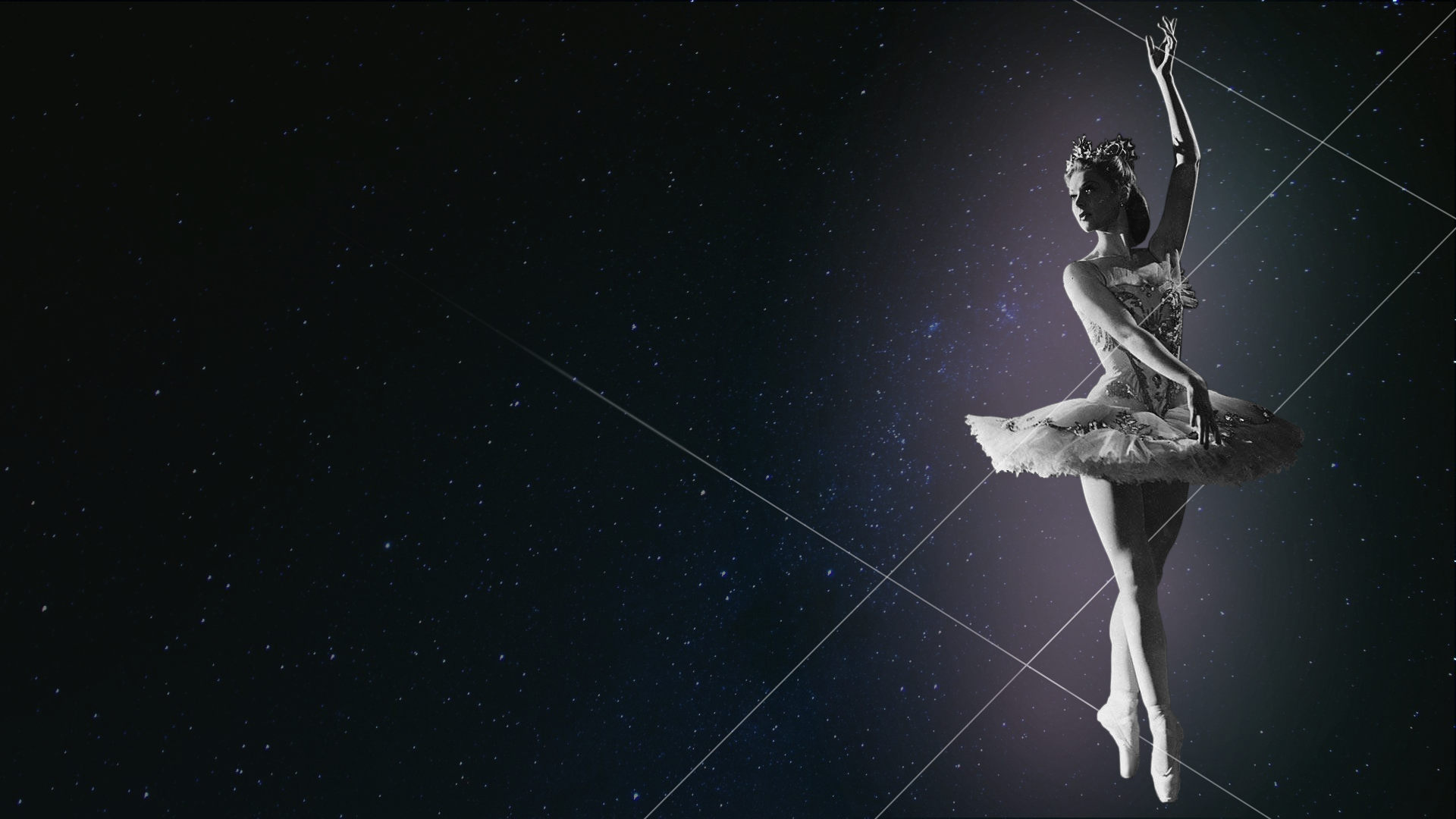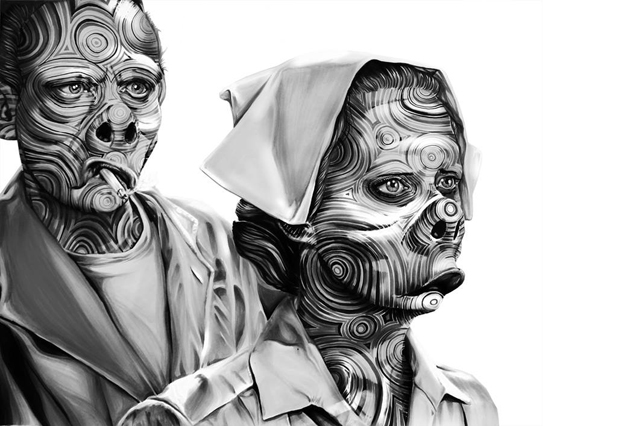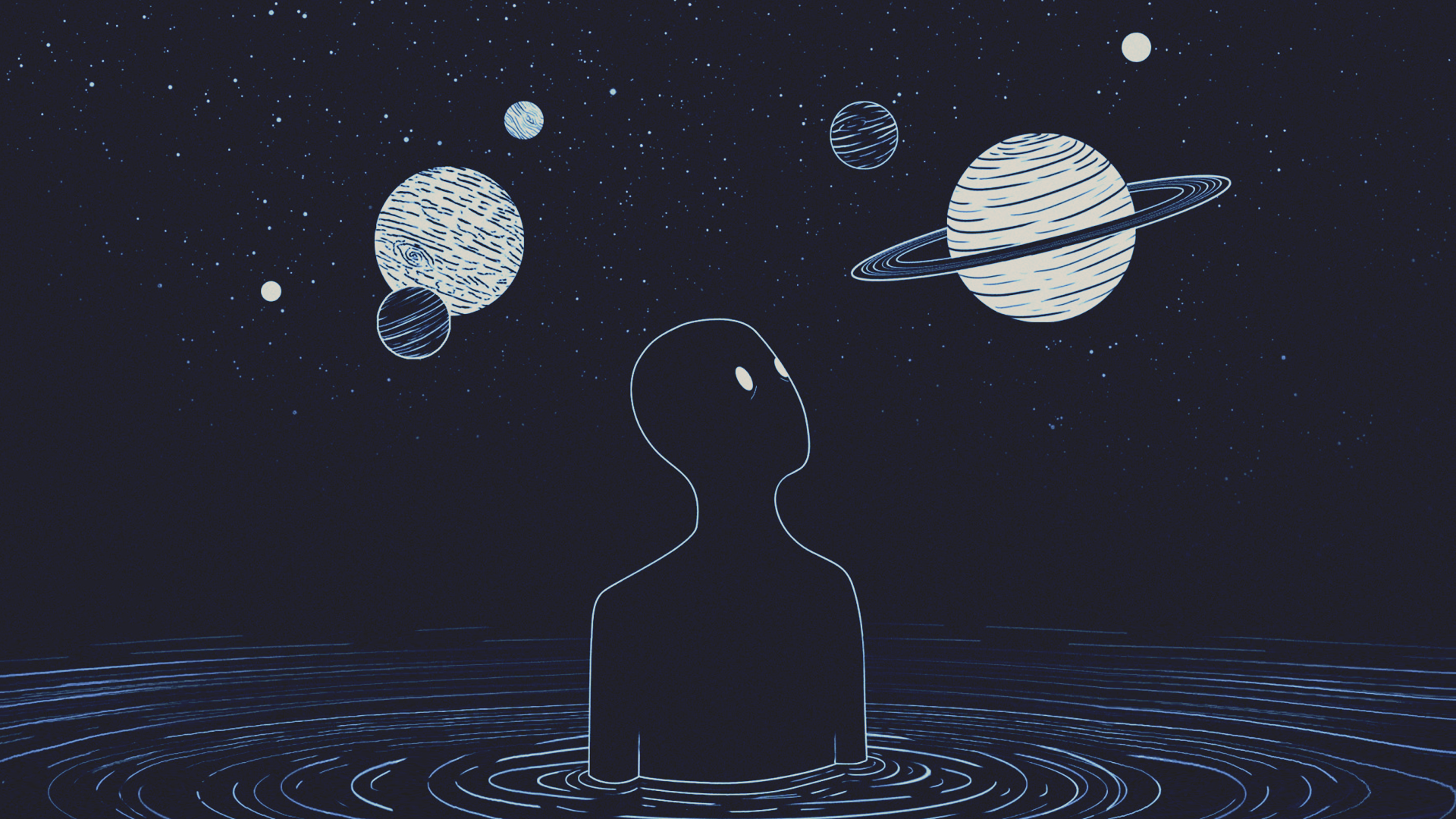“You Are Traveling Through Another Dimension…..” | Adventures In Mind over Matter Through a Fairyland of Geometry

THERE IS A NEIGHBORHOOD OF THE MATHEMATICAL MIND which seeks to exercise the rights of the unsatisfied entrepreneur—the man who finds our created order too confining for his imaginative prowess, as if the infinity of Kepler’s “New Astronomy” were not enough to quench the thirst for his limitless gaze beyond a flat, enclosed, and stationary Earth. With a wizardly muscleman at his side, he is able to dazzle the non-mathematical thinker by invoking an invisible astral-universe through various displays of equations and which is advantageous to his every intellectual and artistic end-means. For this very reason, the fourth-dimension is something its critics once labeled the geometers fairyland.
That the “Hyperspace Theory” was inconceivable by any human means beyond Nth-dimensional geometry and linear algebra proved of little concern to the nineteenth-century fantasizer. There is hardly a science to be “discovered,” let alone adequately nurtured to maturity, should it not afford the legitimacy of an E-ticket attraction. Philosophers, spiritualists, esotericists, sexual provocateurs, the Theosophical Society, and even the Cubists, anyone clinging to the legacy of the ancient Mysteries, needed an invention to back their growing market, and indeed, as one might expect, the theosophist provided one.

Naturally, the Christians—as they so often do, put their stamp of approval on contradictory concepts; detrimental ideals to the age-old faith in which they couldn’t possibly have thought through. Pantheism was on the rebound in the nineteenth century. Reinforced by a Victorian surge of interest in Eastern mysticism, mainly Buddhism and Hinduism, the fourth-dimension was further bolstered by a renewed belief in the “world soul.” Occultist Isaac Newton himself proposed the idea that “space” is God’s sensorium, what might be described as the organ which God makes use of to perceive things. Oh well. Out with the old, in with the new; Euclidean geometry was yesterday’s mathematics. Modernists had physics.
If the occultist had unveiled a hidden compartment by which their pixies and ghostly apparitions might be conveniently stored, and where the laws of physics needn’t apply— that is, until their insatiable appetite for the next séance should summon them to Newtonian conducts; and where shadowy specters for the mind of the trans-humanist might freely roam—then they too wanted their fair share of the baggage. Besides, heaven no longer fit within the Copernican’s latest-greatest Apollo-centered cosmology. God was left homeless by Newtonian physics. The Newtonians had declared the very notion of “up” or “down” to be fashionably outdated wherever there is a globe and gravity retrofitted to it, which meant the Bible’s account of heaven’s “up-ness” could not possibly be taken at face value, if they—the Christian—should be allowed to play along. The Christians put their stamp of approval on that too—at least some of them, if only to be picked last on the team. And now, where the fourth dimension was involved, they too had a “plane”—ironically enough—an entire unexplored Universe of the mind to store their angels and demons within. And while they were at it, God could reside there too.

The fourth-dimension found its initial calling with French mathematician Henri Poincare (1854-1912. For Poincare, the realm went beyond its geometric nature to penetrate perceptual “inner space.” His original 1880 article, “What is the Fourth Dimension?” would be subsequently reprinted another nine times. Poincare’s insight not only inspired Albert Einstein’s Theory of Relativity, but presented Pablo Picasso with such a quandary as to whip up his lifetime devotion to Cubism. Not surprising, since the fourth-dimension is perceived as the realm of the psyche. Art acts as a receiver to the higher realm—so to speak, achieving telekinesis where science cannot. Its career strengthened through Charles H. Hinton (1853-1907), an untenured mathematics instructor at Princeton. For Hinton, the fourth dimension was a mathematical concept represented by the cube, which essentially entailed our higher and immortal self. In his book, Mystery School in Hyperspace, author Graham St. John writes:
“Hinton developed his views on the mystical and evolutionary significance of four-dimensional space. The fourth dimension was perceived to be the source of alternative modes of consciousness like those experienced by mystics, psychics, mediums, and others with evolved means of perception. For Hinton, the fourth dimension was not a mathematical abstraction, but a mode of perception integral to the development of human consciousness.”
Russian theosophist Petr Ouspensky (1878-1947) found reason for lasting disappointment with Hinton, whose work he personally translated into his own native tongue. Albert Einstein mutually agreed, albeit indirectly. Hinton’s exercises, which hoped of deducing fourth-dimensional awareness for himself and his fellow observers, were restricted to mathematical parlor games and landlocked lab experiments, and therefore severely handicapped what may have otherwise been an advantageous outcome. “In art it is necessary to study occultism—the hidden side of life. The artist must be a clairvoyant: he must see that which others do not see; he must be a magician; must possess the power to make others see that which they do not themselves see, but which he does.”
Theosophists Annie Besant and Charles Leadbeater, co-authors of Thought-Forms (1901), neatly summed up the hallmark of Victorian theory. For the Victorian, wildly in pursuit of new ideas and hidden gods of the mind, his psychological was the transcendental. Or as the two put it, “thoughts are things.” More precisely, visitation to the astral-plane was akin to a form of four-dimensional sight. Leadbeater writes: “We must beware of falling into the fatally common error of supposing that what we see is all there is to see.”


Perhaps not so dissimilar theologically from Nikolai Kibalchich, a fellow Russian and revolutionary rocket pioneer who believed humanities ultimate self-salvation would be triumphed through a technological and spiritual blending of transhumanism; Petr Ouspensky believed, “the evolution in consciousness was to be achieved through the development of a culture that augments the new consciousness and causes it to flourish.” In The Occult in Russian and Soviet Culture, Bernice Glatzer Rosenthal writes: “That astronomy grew out of astrology and chemistry out of alchemy is well known, but the links between the occult and modern psychology are yet to be generally recognized. Occult doctrines appealed to people who were interested in what was then called the “inner man,” the soul of the psyche, which rationalists and empiricists neglected or even disdained.” Ouspensky regarded the fourth dimension as a way to escape from death into the real world of the spirit. As an occultist, Ouspensky not only wrote about the mystical potentials of yoga, breathing exercises, dreams, prayer, fasting, and tarot card reading, he even held private conversations with the devil. Through experiments in modified states of consciousness combined with nitrous oxide and hashish, he once had a vision of Linga Sharira. Again, Graham St. John writes:
“A theme lifted from Blavatsky’s The Secret Doctrine—itself adopting Hindu philosophy, where this idea infers the form on which our physical body molded—this referred to a four-dimensional “temporal body.”
Helena Blavatsky defined Linga Sharira in The Key to Theosophy. Here she says: “This term designates the doppelganger or the “astral body” of man or animal. It is the eidolon of the Greeks, the vital and prototypal body; the reflection of the men of flesh. It is born before and dies or fades out, with the disappearance of the last atom of the body.” Blavatsky believed everything in the Universe was conscious—endowed with a consciousness of its own kind and on its own plane of perception. The Universe was the periodical manifestation of this unknown Absolute Essence. Conclusively, the Absolute was “beyond the range and reach of thought.” The key to attaining higher consciousness lay in one’s own ability to change their perception of time, mainly escaping the limitations of the present moment. Blavatsky looked to the fourth-dimension.
While the Victorians and the late nineteenth-century Russians perfected the ideal fourth-dimension, oddly enough it was philosopher Immanuel Kant who first gave notice to the concept. In Thoughts on the True Estimation of Living Forces (1747), he wrote: “if it is possible that there are extensions with other dimensions, it is also very probable that God has somewhere brought them into being; for His works have all the magnitude and manifoldness of which they are capable.” Three decades later, while penning The Prolegomena to Any Future Metaphysics (1783), Kent would inquire:
“If all space were empty but for a single human hand, would it make sense to ask whether that hand was specifically a right hand?”

In a four-dimensional space the notion of a distinct gender becomes obscured, to say the least. Like Kent’s hand, it may appear as a right hand or a left hand, depending on the observer’s position. So too might a male appear as female, or a female as male. Accordingly, if our astral-plane doppelganger—our true fourth-dimensional self—cannot be identified, then we as Christians have serious theological problems. French author Jean Clair, in Sur Marcel Duchamp et la Fin de l’Art, sums up why:
“We are sometimes given a vagina—and that designates a “woman”—virgin, bride, etc.—and sometimes a penis—and that indicates a “man”—bachelor, groom, etc. This physiological accident was never anything more than the effect of an assuredly ironic causality: the laws of Euclidian geometry. In a four-dimensional study … vagina and penis, like an anamorphic illusion, would immediately lose all distinctive character. It is the same object that we would sometimes see as “male” and sometimes as “female,” in this perfect mirror-like reversal of the body that presupposes, because it takes place, the existence of a fourth dimension.”
Yet again, we find ourselves fumbling miserably through a dark room. The fourth-dimension is another humanist invention. More precisely, it is his temple—a delusional catacomb of the mind—and it’s endless. For the humanist, there is no absolute except for what he might ascertain in the warped perversions of his imaginations. Like evolution, like the theory of relativity used to support the globe itself; the so-called fourth-dimension is yet one more dizzying piece to the behemoth puzzle, and we must—we simply must climb out of it.
Almost as though this were a scene from The Matrix, Russian theosophist Petr Ouspensky invokes a picturesque moment in the life of the self-enlightened soul who “wakes up” from the superficial created order that supposedly, like a well-oiled machine, binds us as slaves: “Attaining consciousness is connected with the gradual liberation from mechanicalness, for man is fully and completely under mechanical laws.” If we as Christians should possess a lick of discernment within us, we can see where this is going, and where it has gone. French existentialist Simone de Beauvoir cleans the platter up nicely, as one who transcends from the higher realm, when famously claiming:
“One is not born a woman. One becomes one.”